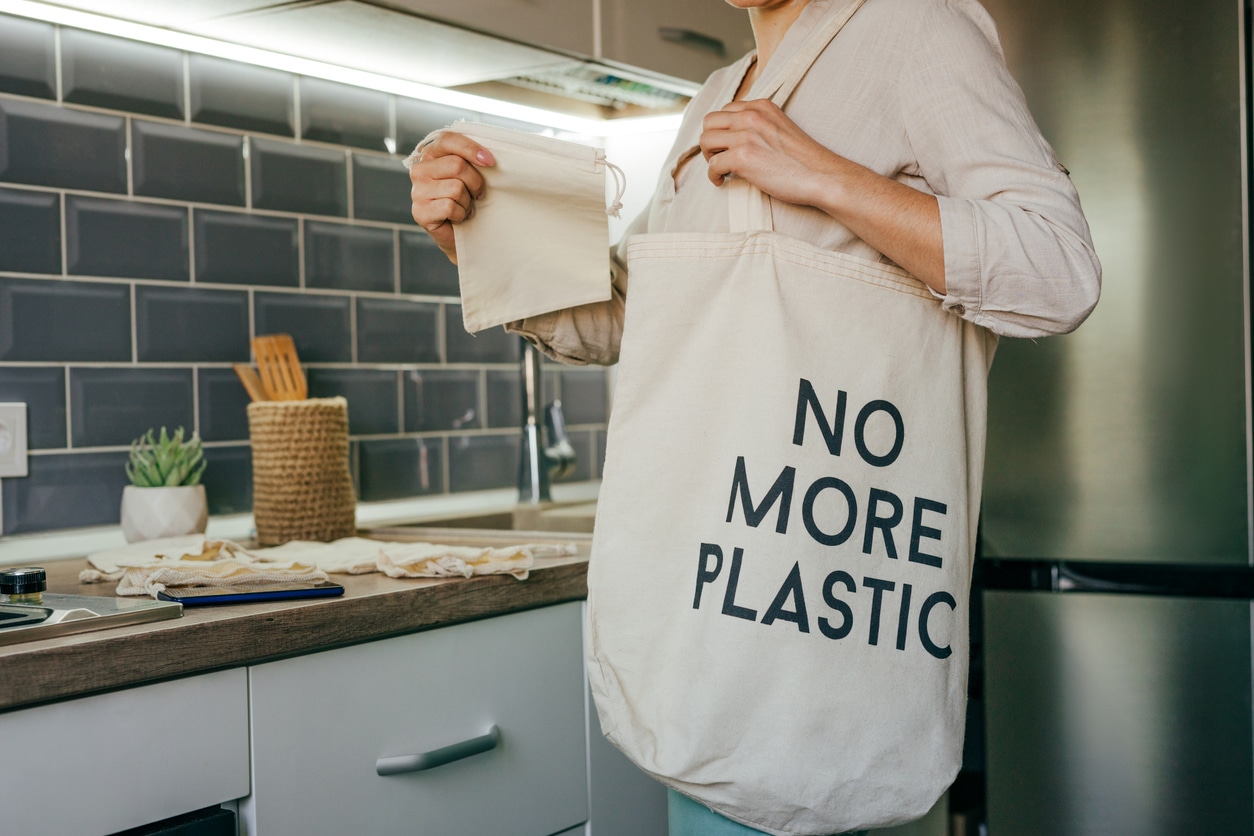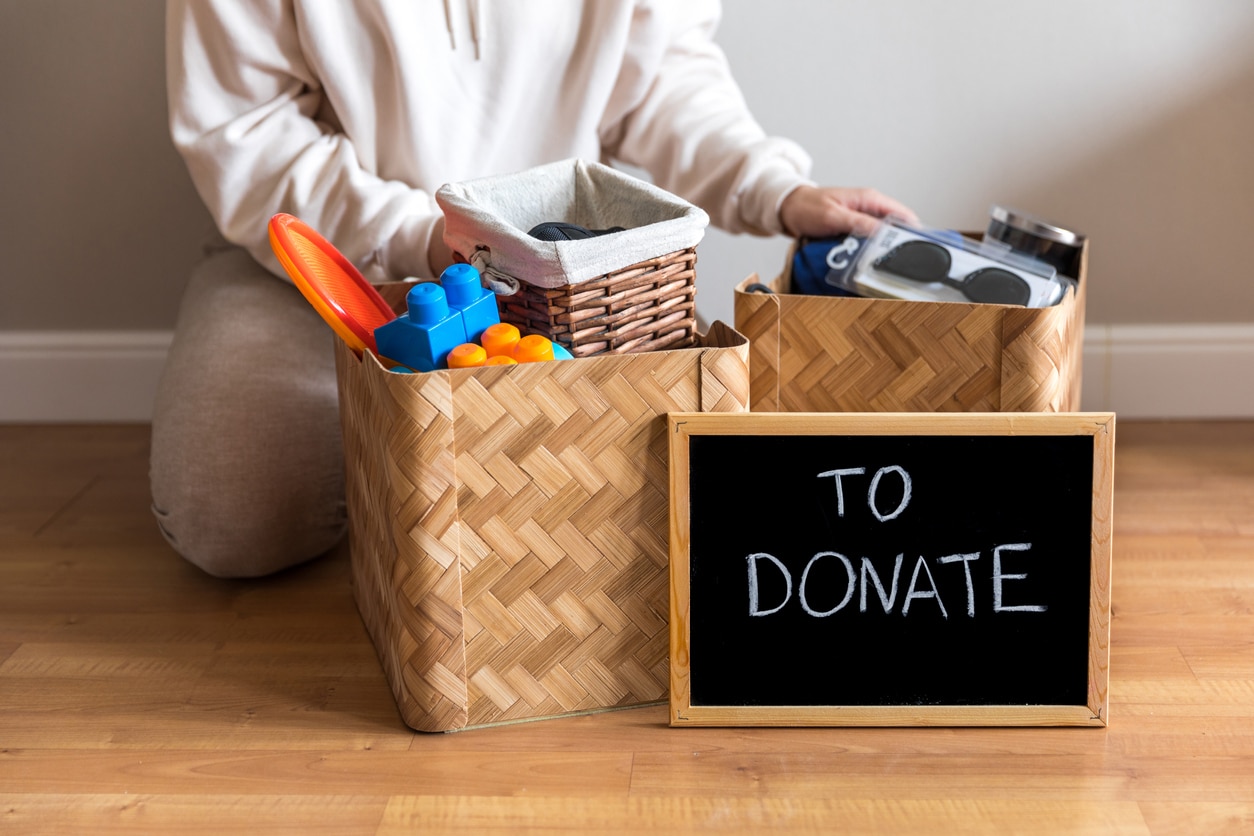
10 Areas In Your Life Where You Could Go Plastic Free
As it’s now is Plastic Free July, I figured I’d make this month’s Biofriendly DIY about areas in your life where you could go plastic free.
For those of you who are unaware, plastic pollution is a massive problem facing the world today. Over the years, plastic has become a staple in making “convenient” products for use at home, in the office, around town or wherever the need arises and it really shouldn’t be. As a result, single- or one-use plastic products are loading up landfills and causing microplastics to leach into our oceans, water, food and more. More than 90% of the plastic ever produced is NOT recycled, yet upwards of 400 tons of plastic waste is generated every year. It’s quite a frightening statistic.
It’s for this reason we each need to take a look at our own plastic consumption and buying habits to see where we can cut back. Eliminating, or at the very least minimalizing, the amount of plastic you purchase not only sends a message, but reduces the amount of plastic waste being generated.
So, let’s take a look at areas in your life where you could go plastic free
How to go plastic free
While there are numerous areas in your life where you could go plastic free, I’d like to start with these 10. You can start with the first one and work your way down the list, start with a few or implement them all. The choice is yours. The key is to actual take action. Start making plastic free choices:
1. Morning coffee or tea
Going plastic free with your morning coffee or tea is all about how you prepare and drink it. Avoid single-use plastic pods, if you’re making your coffee at home. Instead, opt for a reusable cotton or stainless steel coffee filter. Grab a reusable coffee mug and leave the one-use cups behind. This includes if you decide to stop for coffee or tea on your way to work. Bring your own tumbler or mug and have them pour the coffee (or tea) directly into it.
This holds true for water drinkers, as well. Bring a stainless steel water bottle and refill it throughout the day.
2. Grocery Shopping
When going grocery shopping, it’s best to load your reusable, cloth bags into your vehicle (or in your bike basket, in your tote or whatever you plan to use) before you head out. Bring along a few mesh bags for produce, so you don’t have to use the plastic ones provided.
The other thing you should watch out for when grocery shopping is plastic packaging. Many items, even those which don’t require additional packaging, can be found wrapped in plastic. It’s best to avoid these types of products. I mean, seriously, who needs their artichokes wrapped in plastic? I know I don’t. Find the products without unnecessary plastic packaging and choose those instead.
3. Buying in bulk
Buying in bulk can be extremely beneficial to both your wallet and the environment. Buying bulk cuts out the need for unnecessary plastic containers and packaging. It also allows you to purchase the exact amount you want to have or your recipe requires.
If you plan to buy in bulk, which I highly recommend, simply bring your own mason jars and glass containers to add in your nuts, seeds, grains and other pantry items. It’s an easy way to avoid plastic bags and minimize your waste.
4. Vegetables and Herbs
Since we’re on the subject of avoid unnecessary plastic packaging, a sustainable option for vegetables and herbs is to grown your own. You can completely avoid using plastic by doing so. Just go to the local nursery and get seeds for the vegetables and herbs you want. You’ll want to pick up some containers, too, if you don’t have them already. You can also make some repurposed garden containers from items you have around the house.
What’s nice about growing your own is you can eat fresh, grow as much as you want and not have to worry about harsh chemicals or plastic waste. If you’re worried about not having a green thumb, I recommend trying to regrow vegetables from kitchen scraps. It’s fairly simple to do and anything you don’t end up using can make its way into your compost bin.
Last, but not least, you can always visit a local farmers’ market or local farm to get fresh fruits, vegetables and other produce from nearby farmers. You’ll help support local growers and get yourself some tasty produce without the need for plastic. Like you do when you go to the grocery store, be sure to bring your own reusable bags.
5. Compost instead of trash
Rather than tossing food waste into a plastic bag to then be taken to a landfill, consider getting yourself a compost bin or creating a compost pile in your yard. This way you can put the compost to good use in growing more food or to helping your garden grow.
If you aren’t quite sure what you can and can’t add to a compost, keep this ratio in mind…three parts brown compost to one part green compost. Brown compost items are things like newspapers, leaves and wood chips. Green compost items are things like fruit scraps, veggie scraps, coffee grounds, baked goods and grass trimmings.
6. Food storage
Another area of your life where you can go plastic free is in your food storage. No matter how hard you try to make just the right amount of food for your meals, there are times when you might have leftovers. Instead of using a plastic storage container, which could very well leak plastic into your food, opt for a more sustainable container like stainless steel or glass. Ceramic containers can also do a good job at storing food safely.
If you want to have more flexible food storage containers, consider using silicone bags or beeswax wraps. Either one is better for the environment than plastic.
7. Bathroom routine
The bathroom is one of the main place where you will find single- and one-use plastic products. Think about it…toothbrushes, toothpaste, shampoo, conditioner, soap, razors, cotton swabs and more. What’s nice is all of these can be found in more sustainable options. In fact, you can ditch the plastic completely and get yourself some soap bars, shampoo and conditioner bars (or refillable glass containers for such products), toothpaste tablets, a bamboo toothbrush, biodegradable floss and cotton swabs, reusable razors and zero-waste deodorant. The options are out there, you just have to consciously make the biofriendly choices.
8. Take Out food
While making your meals at home is definitely the best option for your overall health and wellness, you may want to eat out at times. That’s okay. When you do, however, be sure to bring your own reusable containers for any leftover food. You should also let your server know you won’t be needing any plasticware, plastic straws or a plastic bag to carry it all in.
NOTE: Some restaurants may have compostable and other eco-friendly take out options, but it’s better to bring your own reusable containers, just in case.
9. Cleaning Products
The easiest way to avoid plastic in your cleaning products is to make your own. You can make a dishwashing detergent, a laundry detergent, disinfectants, abrasives, glass cleaners, a multi-purpose cleaner and more. Some simple cleaning solutions contain ingredients like water, white vinegar, baking soda, citrus (peels) and/or essential oils. Then use glass bottles and containers to store your DIY cleaners.
You can repurpose old clothes into cleaning cloths, or toothbrushes into bath and shower scrubbers, as well.
10. Party planning and preps
If you are the type of person who loves hosting a party for friends and family, it’s likely you’ve used your fair share of plastic, single-use plates, cups, bowls and dinnerware over the years. Fortunately, there’s a more eco-friendly alternative and that’s using reusable products for your party planning and preps.
Opt for reusable cups, plastic and silverware. It’s far less wasteful and a lot more creative. You can have guests bring their own plates and silverware. Drinks can be served in mason jars. If people really need to have straws, they can bring their own glass, silicone or stainless steel ones.
All your food can be served in reusable serving dishes or containers. Leftovers can be stored in those same containers or sent home with guests. If you’re smart and plan ahead, you could actually have a zero-waste picnic or backyard BBQ your friends and family will love.
Why Go plastic free?
The simple fact of the matter is, there is no need to consistently produce so much plastic waste. Plastic single-use products are no longer considered the “convenience” they once were. We know these products stick around polluting the environment. Going plastic free is a much more biofriendly option as it helps save you money, minimize waste and protect the planet’s resources. Make your voice heard by going plastic free.



Post a comment